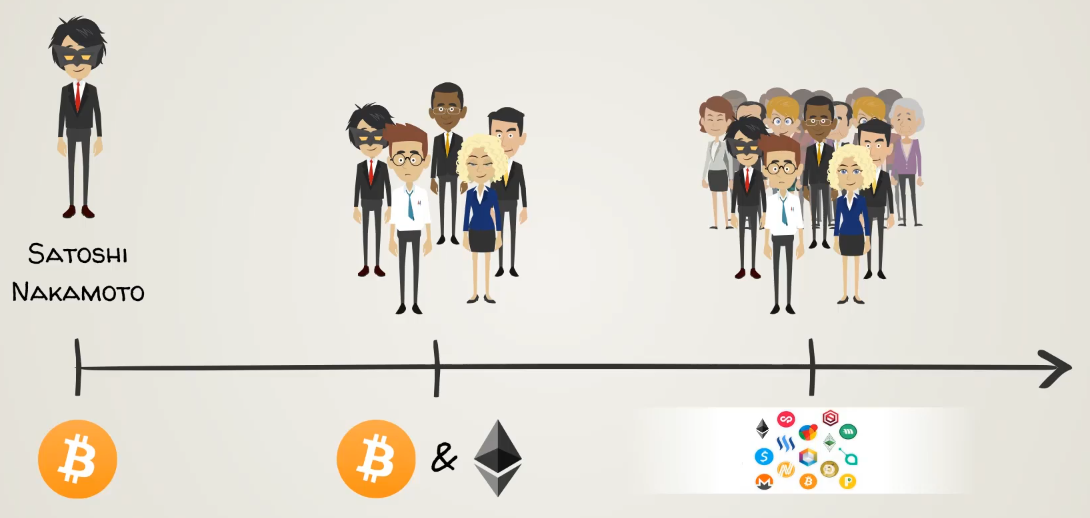As we mentioned in the previous chapters, Bitcoin planted the seed of blockchain technology and cryptoassets, and quickly started gathering a passionate and dedicated community of enthusiasts and supporters. A new movement was set in motion by the ingenious system Satoshi created. The momentum accelerated at an exponential rate and generated a snowball effect of innovation. Further technological disruption and breakthroughs in the blockchain space were imminent. These effects were reinforced by the open source nature of Bitcoin.
Many developers started experimenting with the Bitcoin code by creating alternative cryptoasset protocols. Such new alternative blockchains came to be referred as altcoins (given that they are an alternative to the original coin, Bitcoin). The following diagram shows the evolution of Bitcoin:

By far the greatest impact and most significant innovation in this new space has come with Ethereum. That's why we'll cover it extensively here.
Ethereum represents the second generation of blockchain technology with enhanced functionality beyond payments and distributed asset ledgers. One of its key domain areas is decentralized computing. The vision of Ethereum's founder, Vitalik Buterin, was to create a decentralized global computer, which was implemented through the Ethereum Virtual Machine (EVM).
Ethereum works based on the same fundamental principles and technologies underpinning Bitcoin:
- Blockchain
- Cryptography
- Proof-of-Work consensus algorithm
- Peer-to-peer network
- Software code base
The key innovation, which differentiates Ethereum from Bitcoin and many other altcoins, is its Turing-complete programming language. Turing-complete means that Ethereum's programming language can be used to program and run pretty much any function or task. This enables a broader range of decentralized applications to be created and deployed. It packs a complete set of tools for developers to innovate further and build applications and businesses on the blockchain. The Ethereum blockchain serves as a backbone infrastructure for an entire economic and social ecosystem. That's why the majority of decentralized blockchain applications (or DAPPs for short), at the moment, use the Ethereum platform.
As we will see later, the downside of such larger code base is a larger attack surface and risk of software bugs, which will occur inevitably.
Let's take it step-by-step, and see how Ethereum has evolved since its inception.